|
Notes: Gladstone Dock was the last station to open on the Liverpool
Overhead Railway (LOR). The LOR ran throughout the length of the Liverpool dock system and opened on 6 March 1893. It was an electric railway from the start and was extended in phases up until 2 July 1905 when the extension to Seaforth & Litherland opened. The line was mostly an elevated railway carried on a steal structure that was 16 feet above street level. The only exceptions were at the southern end where a tunnel provided a link to the district of Dingle, at Wellington Dock where the line dropped to ground level to pass under the Lancashire & Yorkshire Railway (LYR) North Docks branch and at the northern end where the line was a conventional railway.
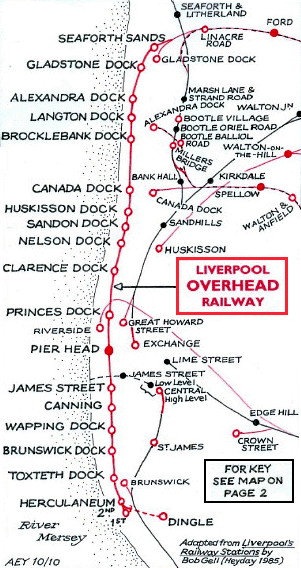 In the second decade of the 20th century work began on the Gladstone Dock complex and the first part of it, a graving dock, opened in 1913. The Gladstone system could handle the largest ships and the LOR opened a station adjacent to Gladstone No. 1 dock on 16 June 1930. In the second decade of the 20th century work began on the Gladstone Dock complex and the first part of it, a graving dock, opened in 1913. The Gladstone system could handle the largest ships and the LOR opened a station adjacent to Gladstone No. 1 dock on 16 June 1930.
The station was located within the dock estate and passengers wishing to alight at the station were required to have a dockside permit. These were issued to dock workers, ships crews and ship passengers. The station was accessed by stairways that were located at each end of the station on its west side. The stairways connected to the down platform (Seaforth direction). On the down platform there were covered ticket kiosks at the top of both stairways. At the mid-point of the platform there was a covered waiting shelter.
To the east of the station was the North Mersey Goods Station which had been opened by the LYR in 1866 (it became part of the London Midland & Scottish Railway in January 1922) and
so access was only available on the west side of the LOR line. Because of this situation the up platform (Dingle direction) had to be accessed via two footbridges
which was unusual for the LOR. Passengers for Dingle had to
walk up stairs to the down platform and then cross to the
up platform by one of the two bridges. The up platform had a waiting shelter at its mid-point.
When the station opened it was served by a high frequency service of trains that ran every few minutes in each direction. The trains mostly ran between Dingle and Seaforth & Litherland but there were shorter workings along the route at rush hour. The last down train of the day terminated at Seaforth Sands. During Aintree race days such as the Grand National special services ran to and from Aintree Sefton Arms. During the 1930s the LOR was carrying millions of passengers every year.
The outbreak of the Second World War on 3 September 1939 made the line even more important as Liverpool was the key west facing port providing an important link with the Americas. The city was a key target and bombing started in December 1940 and continued until June 1941. The LOR was hit many times and Gladstone Dock station was very badly damaged. The line was constantly being patched up so that services could be kept running.
 |
After the war the LOR continued to be a busy railway but in 1955 an engineering survey was carried out on the steel structure of the LOR. It was discovered that the deck plates on which the tracks were mounted were severely corroded, owing both to the effects of the weather and of smoke from steam engines operated on a dock railway beneath the LOR. The plates needed to be replaced within a few years, and the cost was estimated at £2 million. The LOR did not have the funds to carry out the work and, although the line was still carrying millions of passengers every year, complete closure of the line was proposed. Suggestions were put forward for saving the line, including taking it into municipal ownership, but none was successful, and the line closed completely on Sunday 30 December 1956.
Gladstone Dock station was demolished with the rest of the LOR towards the end of 1957.
In the 1990s the Liverpool Bulk Terminal a rail loading facility for coal (and later bio-mass) was built at the site of Gladstone Dock station.
Sources:
- Seventeen Stations to Dingle - John W Gahan - Countyvise 1982
- The Dockers Umbrella - A History of the Liverpool Overhead Railway - Paul Bolger - The Bluecoat Press 1992.
- The Liverpool Overhead Railway - A Liverpool Echo Nostalgia Publication 2011.
To see the other
stations on the Liverpool Overhead Railway click on the station
name: Dingle, Herculaneum Dock 1st,
Herculaneum Dock 2nd,
Toxteth Dock,
Brunswick Dock,
Wapping Dock,
Canning, James
Street, Pier Head,
Princes Dock,
Clarence Dock,
Nelson Dock, Sandon
Dock, Huskisson
Dock, Canada
Dock, Brockleband
Dock, Langton
Dock, Alexandra
Dock & Seaforth
Sands
Click here
for a brief history of the Liverpool Overhead Railway
|




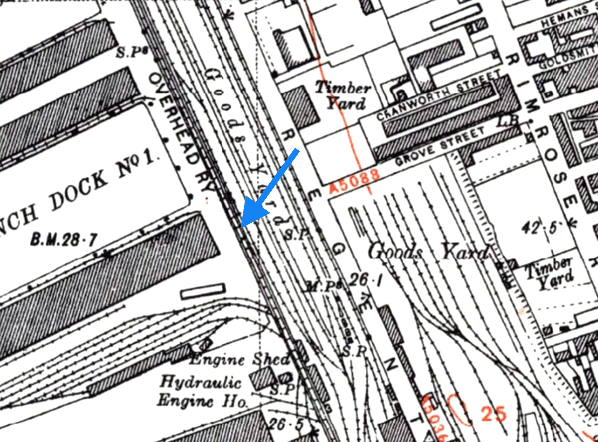
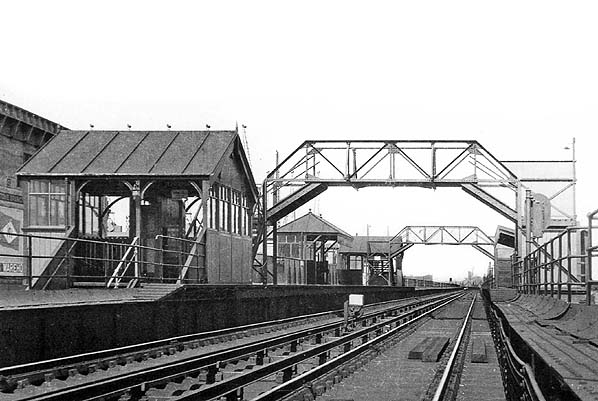

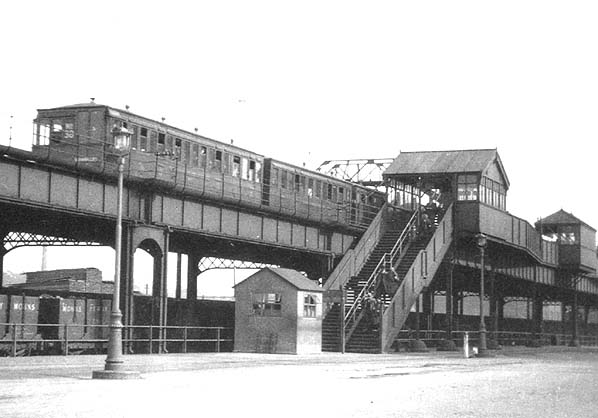
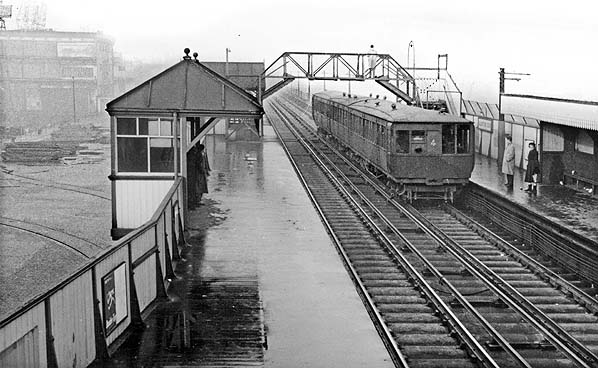

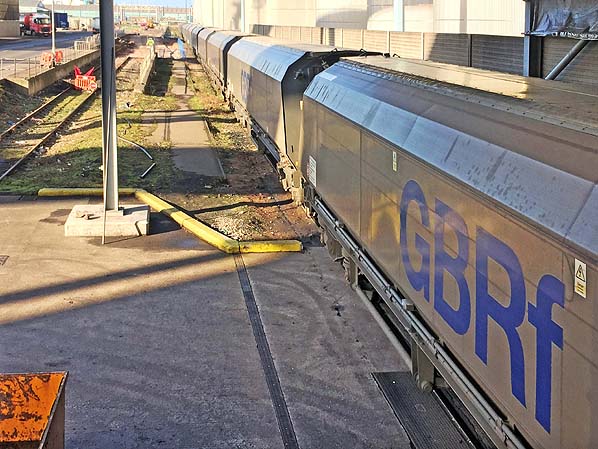
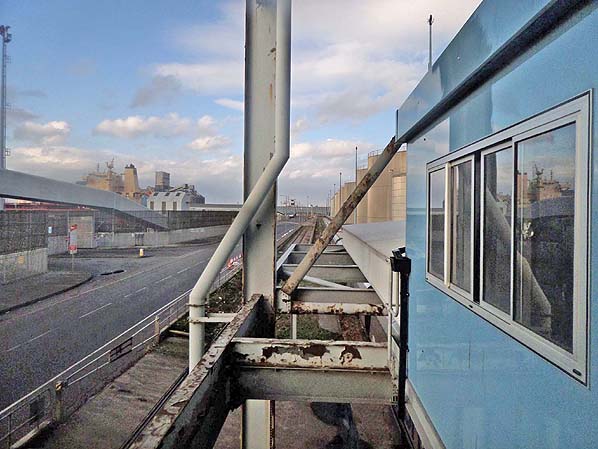
 Home
Page
Home
Page
 In the second decade of the 20th century work began on the Gladstone Dock complex and the first part of it, a graving dock, opened in 1913. The Gladstone system could handle the largest ships and the LOR opened a station adjacent to Gladstone No. 1 dock on 16 June 1930.
In the second decade of the 20th century work began on the Gladstone Dock complex and the first part of it, a graving dock, opened in 1913. The Gladstone system could handle the largest ships and the LOR opened a station adjacent to Gladstone No. 1 dock on 16 June 1930. 
